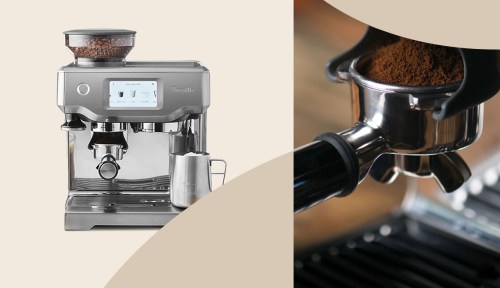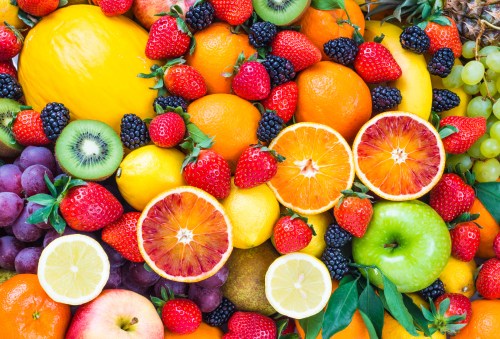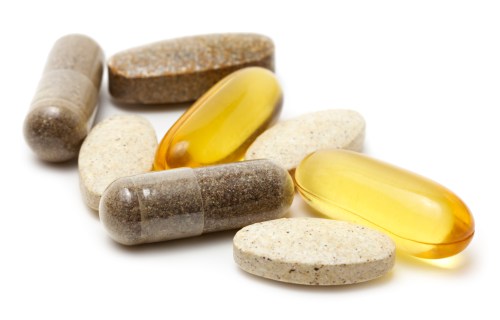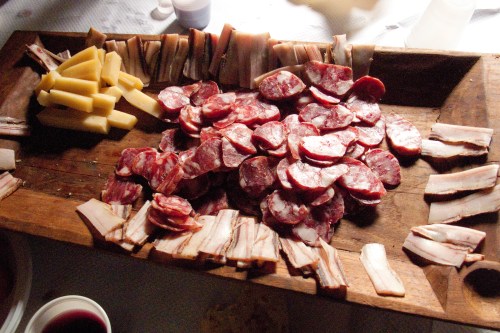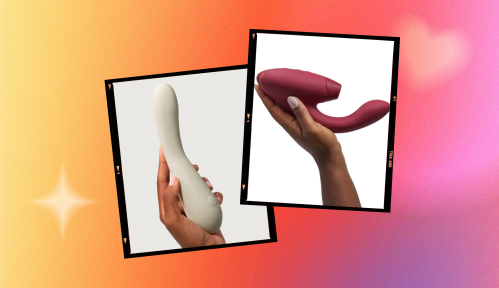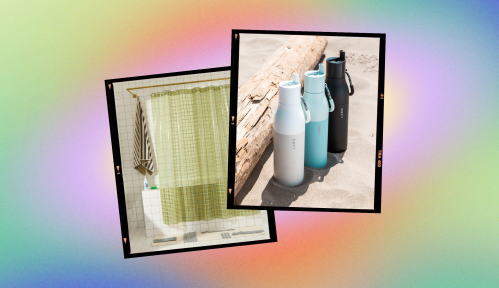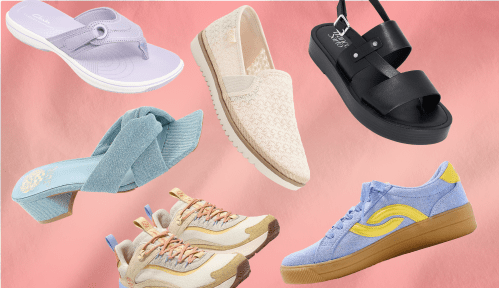Our editors independently select these products. Making a purchase through our links may earn Well+Good a commission
Speak to enough coffee aficionados about all-star home espresso machines, and “Breville” is almost sure to be a brand name that you hear. So, if you’re looking for an espresso machine that’s top of the line in terms of quality, but not so complex that you’ll need a coffee degree to get into it, consider the expert-recommended Breville Barista Touch. It comes in at $1,000, and while that certainly skews pricey, if you typically otherwise get your fix at a coffee shop, the machine pays for itself faster than you may guess.
Experts in This Article
director of coffee, Partners Coffee
executive editor of equipment testing and ingredient tasting at America’s Test Kitchen, home of Cook’s Illustrated and Cook’s Country magazines
You might notice that shopping on this page is a little different than what you’re used to. Never fear; we’ll talk you through it. With the Well+Good SHOP, you can now add products to your cart right from this article page. Just click on a product below and more details will pop up in a new window. Hit “add to cart” and voila! That’s it! As you read more SHOP articles, you can keep adding products to your cart and check out when you’re ready (look for the cart icon on the right side of your screen).
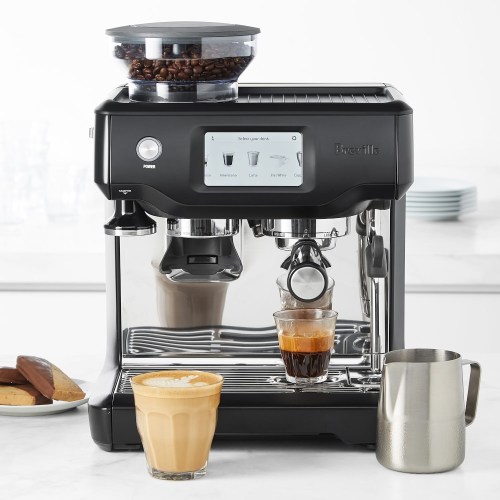
Breville Barista Touch Espresso Machine — $1,000.00
Let’s say you get a $4 espresso-based beverage—like an Americano, latte, cappuccino, or the like—once a day. (I’m using a round $4 here, since depending on how fancy you get with the syrups or alt-milks, that number may creep higher, and if you’re frequenting a local spot, it may be lower.) That’s $1,460 a year, which is well over the price of the Breville Barista Touch—and even when you add in the cost of espresso beans, milk, and other accoutrement you may need to make your favorite drinks at home, you’ll still likely clock in beneath that number.
And even if we dial the frequency back to an espresso-based drink, say, five times a week instead of seven, the math checks out. That’ll add up to $1,044 a year, which is still more than the price of the Breville. And while you still have to buy beans and the like, keep in mind that the machine will keep pumping out delicious drinks well beyond that first year, effectively paying for itself in savings over time.
But of course, this comparison only applies if the drinks emerging from the Breville stand up to the quality of those from your favorite coffee shop. And according to coffee experts, this will definitely be the case.
Why experts like the Breville Barista Touch espresso machine
Overall, it strikes the right balance of high-quality results and streamlined design, without being so minimal or sleek that it’s unintuitive to use—which is an issue with some of the other ultra-fancy espresso machines on the market, says Lisa McManus, executive editor of equipment testing and ingredient tasting at America’s Test Kitchen.
You can choose your drink from a user-friendly touchscreen menu (you’ll find options for espresso, Americano, latte, flat white, and cappuccino), or create your own beverage by adjusting the shot volume, milk texture, and milk temperature, and then save it as a preset. And as you might’ve guessed by these options, there’s a milk steamer built right into the machine, which delivers hands-free texturing for a silky, frothy topper to match whichever drink style you choose.
“Pricier machines deliver better coffee by maintaining a stable temperature throughout the brew process, which allows for even extraction.” —Cary Wong, coffee educator at Partners Coffee
As for the specific elements that make each beverage, well, not your average cup of Joe, it comes down to consistency, says Cary Wong, coffee educator at Partners Coffee. “In general, pricier machines deliver better coffee by maintaining a stable temperature throughout the brew process, which allows for even extraction,” says Wong. “And when extraction is consistent, you get a nice balance of acidity, sweetness, and bitters in the final cup.” The Breville sports both electronic temperature control and a pre-infusion process that gently expands coffee grounds to a consistent size in order to achieve just that.
“The final coffee flavor will be determined by precisely how many compounds are extracted from the grounds,” Wong adds. And according to McManus, a machine needs at least nine bars of pressure to extract all those flavor-imparting compounds correctly. As for the Breville Barista Touch? Its Italian pump exerts a whopping 15 bars.
But before you even start extracting, you’ll need coffee grounds, of course. In the case of the Breville, you’ll also find a built-in grinder—and not just any grinder, but a stainless-steel conical burr grinder, which Wong says can make all the difference in the final taste. “I often get asked by customers, ‘What’s one item that I should invest in for making coffee at home?’ and a burr grinder is the first thing I recommend,” he says. “It works by using two sets of abrasive surfaces called burrs that crush the roasted beans into uniform grind particles—compared to a blade grinder, which uses blades to chop them up, leading to less-consistent results.”
As a bonus, the Breville Barista Touch also has automatic cleaning and descaling cycles, so it’s easy to keep it in mint condition, no matter how many times you’ll be using it.
General advice for using a semi-automatic espresso machine
Most of the steps involved in selecting a drink type and deciding on specifications (like milk texture and coffee-ground size) are pretty intuitive with these kinds of semi-automatic machines, but there is one step that could require some practice, says McManus, and that’s tamping the grounds.
Because this Breville machine includes automatic grind dosing, it’ll deliver the ideal amount of coffee to the portafilter (the tool that holds the grounds) on demand, but at that point, you’ll need to tamp and trim the grounds manually, just as a coffee-shop barista would, using the included razor tool. “If they’re too lightly or heavily tamped, the steam and water won’t pass through properly to extract the espresso,” says McManus.
To figure out if you’re erring on either side, try it out and inspect the result: If the espresso dribbles out slowly and looks like ink, you may have tamped down the coffee too much, slowing the water’s passage and causing over-extraction, says McManus. And if, by contrast, the stream of espresso rushes out quickly or appears pale, you’ve likely not tamped down the coffee enough, restricting contact between the water and the grounds and resulting in under-extraction.
Thankfully, it’s easy to adjust in either direction—and the best way to assess your results is just to taste a cup and see. After all, if there’s one thing that all coffee experts can agree on, it’s that coffee and espresso preference is ultra-personal.
Want to be the first to hear about the latest (and greatest) SHOP product drops, custom collections, discounts, and more? Sign up to have the intel delivered straight to your inbox.
Sign Up for Our Daily Newsletter
Get all the latest in wellness, trends, food, fitness, beauty, and more delivered right to your inbox.
Got it, you've been added to our email list.
